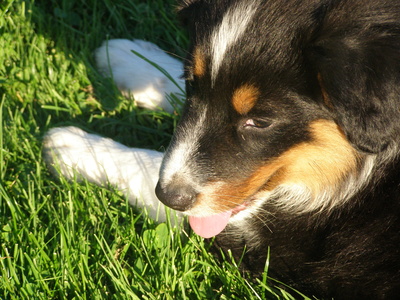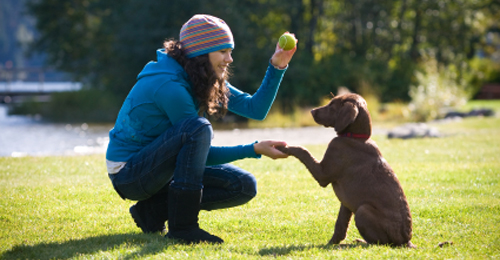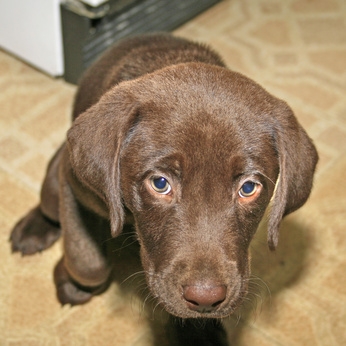
Dog Whisperer Crate Training. Cesar Milan is known as the Dog Whisperer. On his TV show, the Dog Whisperer, he has become a well known training authority. As the Dog Whisperer, he has trained many dog owners to be the pack leader and create better relationships with their dogs. Crate training is a part of this process. Not only does crate training help with housebreaking, dogs that use a crate tend to be calmer and more secure. Dogs used to a crate also better adapt to the confines of travel.

A crate can be a useful tool in training and living with your dog. It is an essential part of successful potty training, as dogs do not like to soil their sleeping place. This helps puppies establish bladder and bowel control. The crate also becomes a safe haven from loud noises, little kids or strangers in the house. Using a crate during the day when you are not home also ensures your dog will be safe. Dogs that are alone or bored can easily get into things that can be harmful, such as trash, old food or chemicals.
With crate training, it is important to have the right attitude and approach. The crate is not to be used as a prison or a punishment. The crate should be placed in a quiet area in the house, one that is away from family activity during the night hours when you want the dog to sleep. According to the Dog Whisperer, the first couple of nights might be difficult, but you must stay strong. The long term benefits are worth it. When you are home, make sure your dog has access to the crate and leave the door open. Your dog's freedom, when you are home, to enter and leave the crate, will reinforce that this is not a punishment or something to be feared.
A crate needs to be of the appropriate size to accommodate your dog laying on his side, sitting or standing up. If you are purchasing a crate for your puppy, take into consideration his size upon adulthood. Obviously, a dog will not enjoy using a crate that is too small. Having a crate that is too big is just as uncomfortable for a dog that is anxious and needs a cozy den to feel secure. A wire crates enable a dog to be in his crate and still see all around him. A plastic crate can be easier to transport; however, it largely limits your dog's ability to see outside his crate. Some dogs will chew on the plastic. Use a blanket or dog bed to make the crate comfortable.
Remember, no skill is learned in a day. Consistency is the key. Do not give your dog food or water before going into the crate, as this will cause him to have to relieve himself. Do not leave food or water in the crate. This could easily be spilled, making the crate messy and uncomfortable for your dog.
Crate training is a responsible choice made by pet owners who want to have a pet companion. The most important part of this training is to remember that crate training is not a punishment. You are giving your dog a place in your home that is just his; you are teaching him manners needed to live in your house; and you are making him a part of your family.
 Indoor Grass & Sod for Potty Training Puppies
Indoor Grass & Sod for Potty Training Pupp
Indoor Grass & Sod for Potty Training Puppies
Indoor Grass & Sod for Potty Training Pupp
 Secrets To German Shepherd Coaching
Keep the courses sessions short but often. When things lose
Secrets To German Shepherd Coaching
Keep the courses sessions short but often. When things lose
 Dog Whisperer Crate Training
Dog Whisperer Crate Training
Dog Whisp
Dog Whisperer Crate Training
Dog Whisperer Crate Training
Dog Whisp
 German Shepherd Training & Tricks
German Shepherd Training & Tricks
German Shepherd Training & Tricks
German Shepherd Training & Tricks
 Crate Training an 8 Week Old Lab Puppy
Crate Training an 8 Week Old Lab Puppy
Crate Training an 8 Week Old Lab Puppy
Crate Training an 8 Week Old Lab Puppy
Copyright © 2005-2016 Pet Information All Rights Reserved
Contact us: www162date@outlook.com